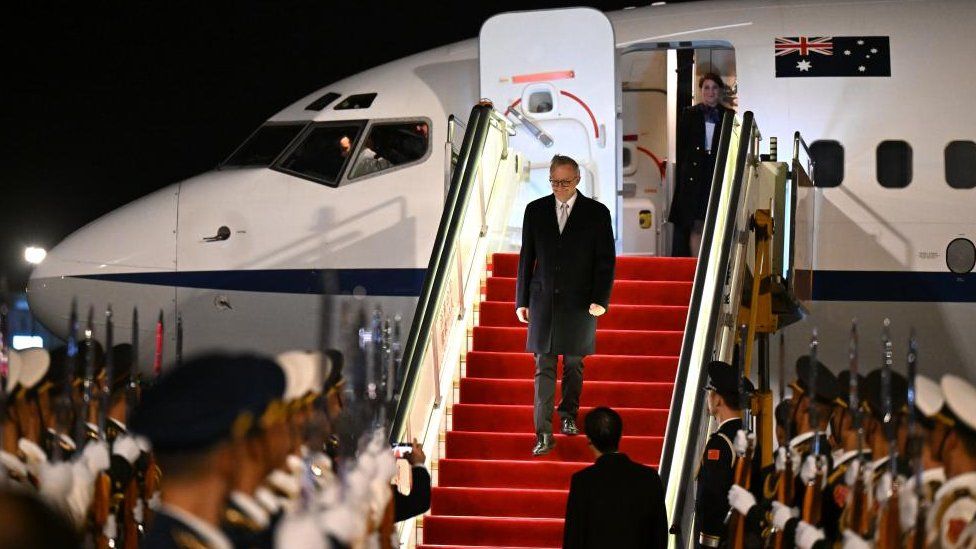Australian PM Anthony Albanese and Chinese President Xi Jinping will soon sit down for a drought-breaking bilateral meeting in Beijing.
Mr Albanese, who landed in Shanghai on Saturday, is the first Australian leader to visit China since 2016.
The visit is seen as a key moment in thawing relations, after a string of trade and security disputes.
Trade will top the agenda – Mr Albanese is calling for the removal of Chinese tariffs on Australian goods.
Mr Xi is expected to ask for more access to key Australian sectors.
“What I’ve said is that we need to cooperate with China where we can, disagree where we must and engage in our national interest,” Mr Albanese told reporters in Beijing on Monday, ahead of the meeting.
His trip follows a diplomatic deep freeze prompted by – among other things – Australia’s calls for an investigation into the origins of Covid-19, and economic sanctions enacted by Beijing on key Australian exports such as beef, wine, and barley.
It also coincides with the 50-year anniversary of Gough Whitlam’s iconic visit to China to visit Mao Zedong in 1973, marking the first trip by an Australian prime minister after the establishment of diplomatic ties.
- Australia and China eye new ways to heal old wounds
But a list of sticking points and security concerns will hang over Monday’s talks.
Australian writer Yang Hengjun – whose health is said to be rapidly deteriorating – has been imprisoned in China on espionage charges since 2019, and Mr Albanese is facing pressure at home to secure his release.
Canberra’s growing military ties with Washington and a recent overhaul of its defence posture – widely seen as aimed at countering China – could make it difficult for the two sides to find common ground outside of economic interests, analysts say.
Some experts predict Beijing could push for greater access to Australia’s resources and renewable energy sectors, but in recent years, the Australian government has taken measures to inhibit Chinese ownership of critical minerals and mining projects.
